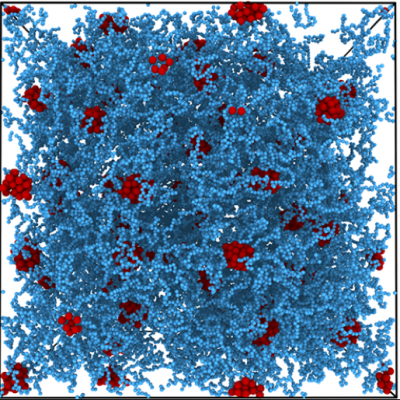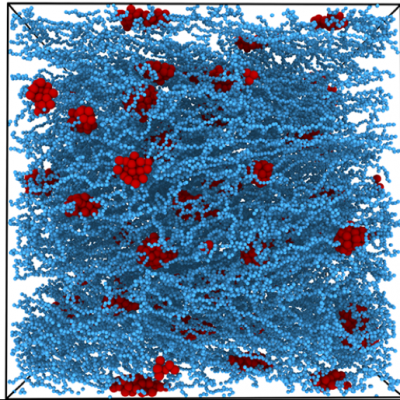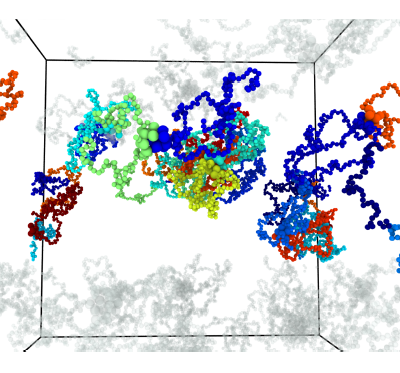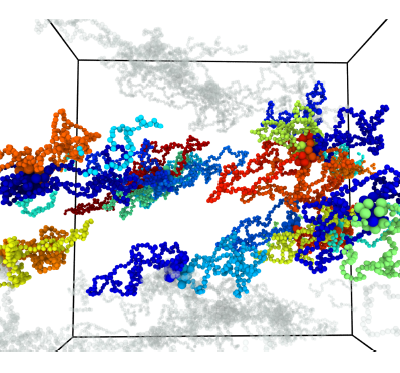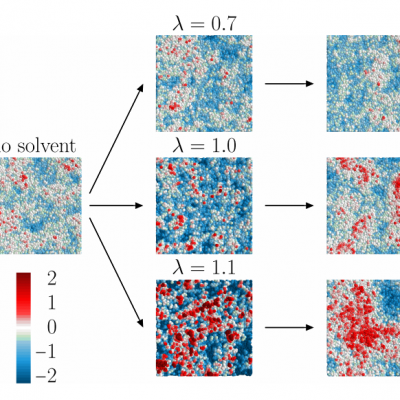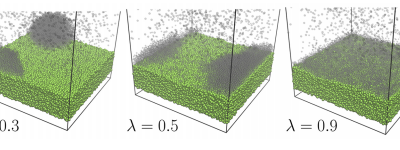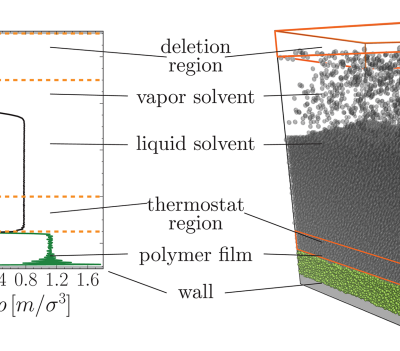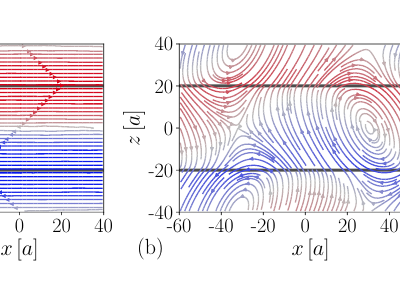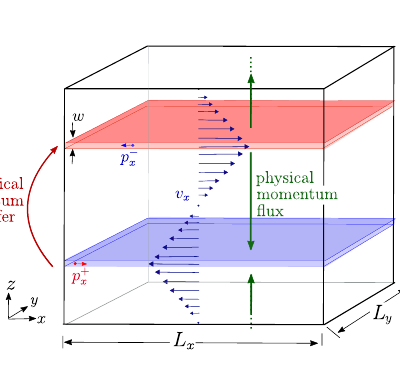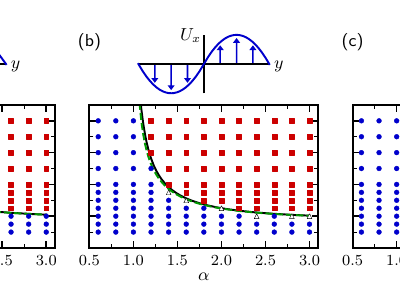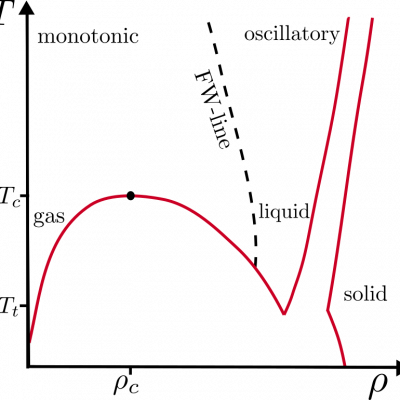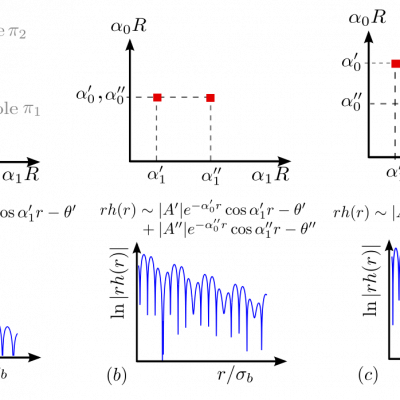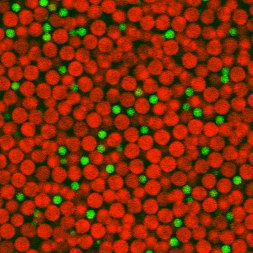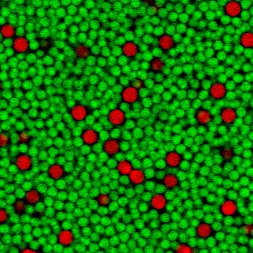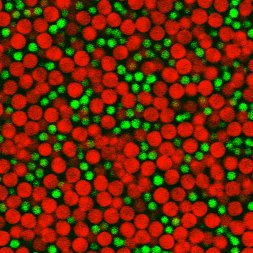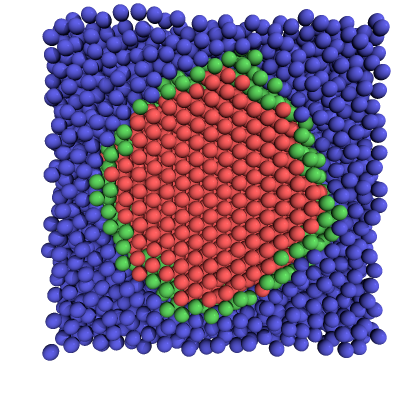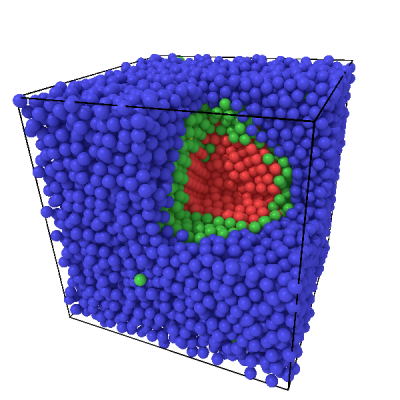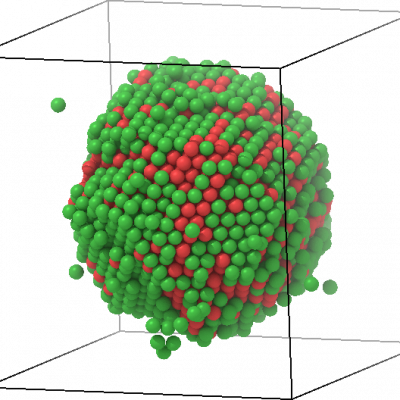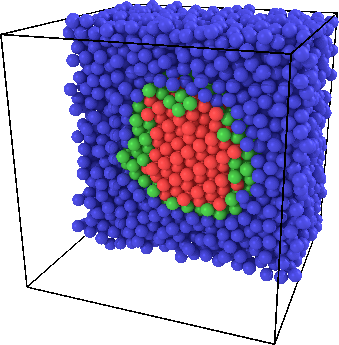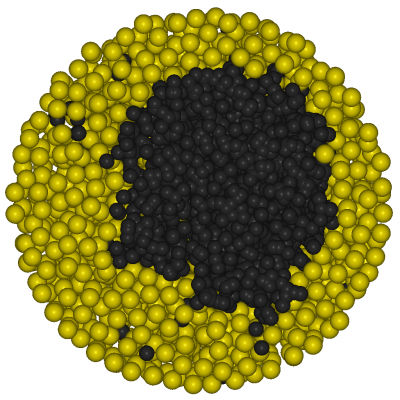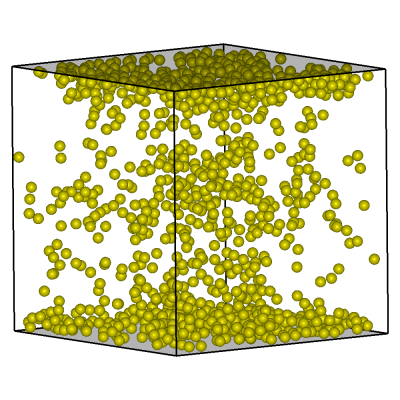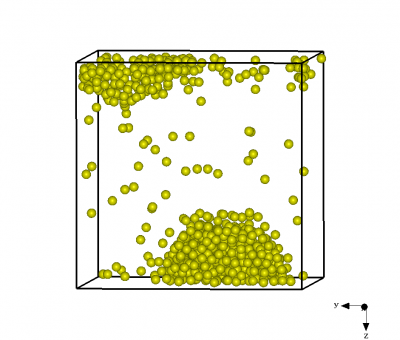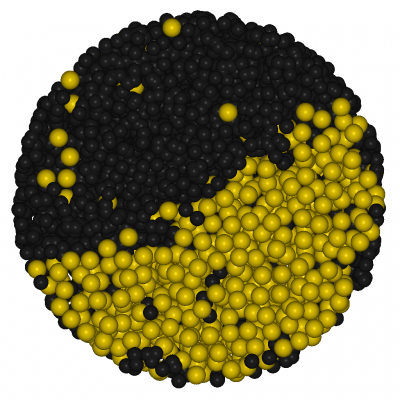Current Research Projects
Self assembly of sequence-defined macromolecules
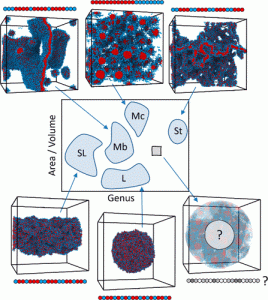 We are interested in how macromolecules (e.g. synthetic polymers, proteins, peptides,…) with defined sequences of different monomers (e.g., hydrophobic/hydrophilic, amino-acids,..) self-assemble in dilute solutions and which specific sequence motifs lead to what large-scale self-assembled structure. For this, we use a combination of MD simulations and ML techniques.
We are interested in how macromolecules (e.g. synthetic polymers, proteins, peptides,…) with defined sequences of different monomers (e.g., hydrophobic/hydrophilic, amino-acids,..) self-assemble in dilute solutions and which specific sequence motifs lead to what large-scale self-assembled structure. For this, we use a combination of MD simulations and ML techniques.
Related publications:
- Model for disordered proteins with strongly sequence-dependent liquid phase behavior, Statt, Casademunt, Brangwynne, and Panagiotopoulos, JCP, 152, (2020)
- Unsupervised learning of sequence-specific aggregation behavior for a model copolymer, Statt, Kleeblatt, and Reinhart, Soft matter, 17, 33 (2021)
- Opportunities and challenges for inverse design of nanostructures with sequence defined macromolecules, Reinhart and Statt, Accounts of Materials Research, 2, 9 (2021)
- Predicting aggregate morphology of sequence-defined macromolecules with recurrent neural networks, Bhattacharya, Kleeblatt, Statt, and Reinhart, Soft matter, 18, 27 (2022)
Stress responsive polymer materials
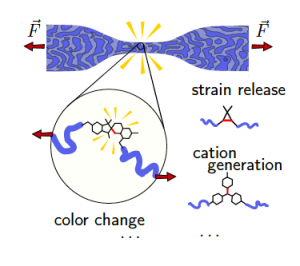 The development and design of highly specific responsive materials has great potential in many applications, ranging from self-healing or self-strengthening materials, shape recovering materials, chemical sensing or damage sensing, and bio-related control and release systems. Our group explores the fundamental questions of how macroscopic forces are transmitted to the micro-scale in heterogeneous, complex environments. We will use the generated fundamental knowledge to help design novel responsive materials.
The development and design of highly specific responsive materials has great potential in many applications, ranging from self-healing or self-strengthening materials, shape recovering materials, chemical sensing or damage sensing, and bio-related control and release systems. Our group explores the fundamental questions of how macroscopic forces are transmitted to the micro-scale in heterogeneous, complex environments. We will use the generated fundamental knowledge to help design novel responsive materials.
Polymers for tuning crystallization
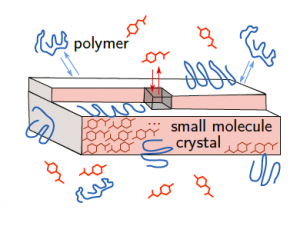 Small organic molecules are used in electronics, solar cells, pharmaceutics, and as biodegradable coatings. For many of these applications to be effective, it is crucial to be able to control crystallization behavior and morphology. Polymer additives can be used to achieve this control. For this purpose, it is essential to understand the non-equilibrium pathways for crystallization in complex systems. Automated screening with efficient computer simulations can be used to gain systematic insight into how polymers affect crystallization behavior of small molecules.
Small organic molecules are used in electronics, solar cells, pharmaceutics, and as biodegradable coatings. For many of these applications to be effective, it is crucial to be able to control crystallization behavior and morphology. Polymer additives can be used to achieve this control. For this purpose, it is essential to understand the non-equilibrium pathways for crystallization in complex systems. Automated screening with efficient computer simulations can be used to gain systematic insight into how polymers affect crystallization behavior of small molecules.
Past Research Projects
Star polymers under shear flow
Related publication:
- Self-Organization and Flow of Low-Functionality Telechelic Star Polymers with Varying Attraction, E Moghimi, I Chubak, A Statt, MP Howard, D Founta, G Polymeropoulos, K Ntetsikas, N Hadjichristidis, A Z Panagiotopoulos, C N Likos, D Vlassopoulos, ACS Macro Letters 8, 766-772
Evaporation of polymer solvent mixtures
Related publications:
- Influence of hydrodynamic interactions on stratification in drying mixtures, A Statt, MP Howard, AZ Panagiotopoulos, The Journal of Chemical Physics 149 (2)
- Solvent quality influences surface structure of glassy polymer thin films after evaporation, A Statt, MP Howard, AZ Panagiotopoulos
Instability of Shear Flows in Spatially Periodic Domains
Related publications:
- Unexpected secondary flows in reverse nonequilibrium shear flow simulations A Statt, MP Howard, AZ Panagiotopoulos Physical Review Fluids 4 (4), 043905, 2019
- Instability of Shear Flows in Spatially Periodic Domains MP Howard, A Statt, HA Stone, TM Truskett arXiv preprint arXiv:1907.07086, 2019
Binary hard sphere mixtures
Related publication:
- Direct observation in 3d of structural crossover in binary hard sphere mixtures A Statt, R Pinchaipat, F Turci, R Evans, CP Royall The Journal of chemical physics 144 (14), 144506
Nucleation of colloidal crystals
Related publications:
- Finite-size effects on liquid-solid phase coexistence and the estimation of crystal nucleation barriers A Statt, P Virnau, K Binder Physical review letters 114 (2), 026101
- Estimation of Nucleation Barriers from Simulations of Crystal Nuclei Surrounded by Fluid in Equilibrium, A Statt, P Koß, P Virnau, K Binder, High Performance Computing in Science and Engineering 16, 49-59 2016
- Monte Carlo simulation of crystal-liquid phase coexistence, A Statt, F Schmitz, P Virnau, K Binder, High Performance Computing in Science and Engineering 15, 75-87, 2016
- Crystal nuclei in melts: A Monte Carlo simulation of a model for attractive colloids, A Statt, P Virnau, K Binder, Molecular Physics 2015
Phase separation of colloids in confinement
Related publications:
- Computer simulation of heterogeneous nucleation of colloidal crystals at planar walls, BJ Block, D Deb, F Schmitz, A Statt, A Tröster, A Winkler, T Zykova-Timan, The European Physical Journal Special Topics 223 (3), 347-361, 2014
- Computer simulations of structure, dynamics, and phase behavior of colloidal fluids in confined geometry and under shear, A Winkler, D Winter, P Chaudhuri, A Statt, P Virnau, J Horbach, K Binder The European Physical Journal Special Topics 222 (11), 2787-2801, 2013
- Phase transitions and phase equilibria in spherical confinement,A Winkler, A Statt, P Virnau, K Binder,Physical Review E 87 (3), 032307,2013
- Phase Separation of Colloid Polymer Mixtures Under Confinement,A Statt, A Winkler, P Virnau, K Binder,High Performance Computing in Science and Engineering ‘13, 19-31, 2013
- Controlling the wetting properties of the Asakura–Oosawa model and applications to spherical confinement,A Statt, A Winkler, P Virnau, K Binder,Journal of Physics: Condensed Matter 24 (46), 464122, 2012
